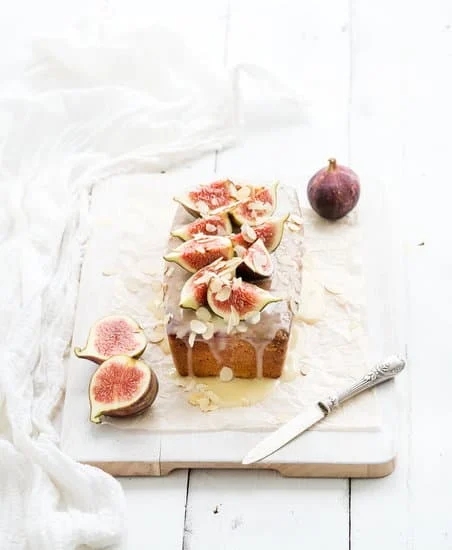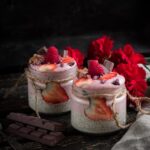Whipped cream icing is a versatile and delicious option for decorating cakes, adding a light and fluffy finish that can elevate the look and taste of any baked creation. Whether you’re a professional baker or a home cook looking to impress, mastering the art of whipped cream icing can take your cake decorating skills to the next level.
This article will delve into everything you need to know about whipped cream icing recipes for decorating cakes, from its history and benefits to ingredients, steps, tips, variations, and troubleshooting common issues.
The origins of whipped cream icing date back centuries, evolving into a popular choice for embellishing cakes and desserts around the world. Understanding the history of this delectable topping can provide insight into its cultural significance and how it became a staple in sweet treats. From simple homemade recipes to intricate designs created by skilled pastry chefs, whipped cream icing has become synonymous with elegance and decadence in the world of baking.
Choosing whipped cream over other types of icing can offer numerous benefits, such as a lighter texture, fresher flavor, and easier application for decorating purposes. With the right ingredients and techniques, you can achieve stunning designs and decorations that will wow your guests or customers.
Stay tuned as we explore the essential components for making whipped cream icing, detailed steps on how to whip it up perfectly every time, expert tips for decorating with this airy delight, different flavors to experiment with, and solutions to common issues that may arise during the process.
History of Whipped Cream Icing
Whipped cream icing has a rich history steeped in tradition and innovation when it comes to cake decorating. The origins of using whipped cream as a delightful topping for cakes can be traced back centuries, with its creamy texture and light sweetness enhancing the flavor of baked goods. Initially, whipped cream was manually beaten by hand until soft peaks formed, showcasing the dedication and artistry that went into creating this delectable treat.
As time progressed, the evolution of whipped cream icing saw the advent of mechanical mixers and electric beaters, simplifying the process and allowing for a more consistent outcome. This technological advancement made it easier for bakers to achieve the desired fluffy consistency without exerting excessive effort. Consequently, whipped cream became a popular choice for decorating cakes due to its versatility in complementing various flavors while adding an elegant touch to desserts.
The appeal of whipped cream icing continued to grow as decorators experimented with different techniques and designs. From simple swirls and rosettes to intricate piping work and 3D decorations, whipped cream offered endless possibilities for creativity in cake decorating.
Its lightness and airy texture provided a refreshing alternative to heavier frostings, appealing to those who preferred a lighter finish on their cakes. With its roots deeply ingrained in culinary history, whipped cream icing remains a timeless favorite among bakers and dessert enthusiasts alike.
Benefits of Whipped Cream Icing
Whipped cream icing is a popular choice for decorating cakes due to its light and airy texture, making it the perfect complement to a moist cake. Unlike buttercream or fondant, whipped cream icing is known for its delicate flavor that doesn’t overpower the taste of the cake itself.
This is especially beneficial for those who prefer a lighter and less sweet frosting on their cakes. The simplicity of whipped cream icing also allows for easy customization in terms of color, flavor, and design, making it a versatile option for any occasion.
One of the main advantages of using whipped cream icing instead of other types of icing is that it contains fewer calories and less fat. Traditional buttercream can be heavy and overly sweet, while whipped cream offers a lighter alternative without compromising on taste or texture.
For those looking to indulge in a delicious dessert without feeling weighed down by heavy frosting, whipped cream icing is the perfect solution. Additionally, whipped cream can easily be flavored with extracts or fruit purees to create a variety of unique flavors that cater to different preferences.
Furthermore, whipped cream icing has a smooth and creamy consistency that spreads easily on cakes without becoming too stiff or difficult to work with. This makes it an ideal choice for both novice and experienced bakers alike when it comes to decorating cakes.
Whether you’re looking to achieve simple swirls and patterns or intricate designs, whipped cream icing provides a versatile canvas for your creative visions. With just a few key ingredients and some basic kitchen tools, you can whip up a batch of this delightful frosting in no time and elevate the presentation of your cakes to new heights.
| Benefits | Details |
|---|---|
| Lighter Texture | Complements moist cakes |
| Lower Calorie Content | Healthier alternative to buttercream |
| Easy Customization | Allows for creative designs and flavors |
Ingredients for Whipped Cream Icing
When it comes to creating a delicious whipped cream icing for decorating cakes, having the right ingredients is key. Here is a list of essential items you will need to ensure your whipped cream turns out light, fluffy, and perfect for adorning your sweet treats:
- Heavy whipping cream: This is the star ingredient that will be whipped up into a light and creamy consistency.
- Confectioners’ sugar: Also known as powdered sugar, this sweetener helps to stabilize the whipped cream and add sweetness.
- Vanilla extract: Adding a hint of vanilla enhances the flavor of the whipped cream icing and gives it a delicious aroma.
In addition to these basic ingredients, you may also want to consider adding flavorings or colors to customize your whipped cream icing. Some popular options include cocoa powder for chocolate-flavored icing, fruit purees for fruity variations, or food coloring for vibrant hues. Get creative with your ingredients to create a whipped cream icing that not only looks beautiful but tastes amazing too.
Finally, don’t forget about any additional tools you might need when making whipped cream icing. A stand mixer or hand mixer will make the whipping process easier and faster.
And if you plan on piping intricate designs onto your cakes, having piping bags and tips on hand will help you achieve professional-looking decorations. With the right ingredients and tools at your disposal, you’ll be well on your way to creating stunning cakes adorned with delicious whipped cream icing.
Steps to Make Whipped Cream Icing
Whipped cream icing is a versatile and delicious option for decorating cakes, providing a light and fluffy texture that complements any cake flavor. Making your own whipped cream icing at home is simple and allows you to customize the flavor and sweetness levels to suit your preferences. Follow these steps to create a perfect whipped cream icing for your next cake decorating project:
- Chill your mixing bowl and beaters in the freezer for about 15 minutes before starting. This helps the cream whip up faster and hold its shape better.
- Pour heavy whipping cream into the chilled mixing bowl. For best results, use cream with a high fat content (at least 35%) for a stable whipped cream.
- Add powdered sugar to sweeten the whipped cream, starting with a small amount and gradually increasing to reach your desired level of sweetness.
- Begin whipping the cream on low speed, gradually increasing to medium-high as it thickens. Be careful not to overwhip, as this can lead to grainy or curdled whipped cream.
Once you have achieved stiff peaks, your whipped cream icing is ready to use for decorating cakes. It can be piped onto cakes using pastry bags fitted with decorative tips or spread smoothly over the surface for an elegant finish. Experiment with different techniques like rosettes, swirls, or even intricate designs for a truly show-stopping cake presentation.
- For added flavor, consider incorporating extracts like vanilla or almond into your whipped cream icing recipe.
- To achieve vibrant colors in your decorations, use gel food coloring instead of liquid coloring which can alter the consistency of the whipped cream.
- If you plan on refrigerating a cake decorated with whipped cream icing, store it in an airtight container to prevent drying out or absorbing other odors from the fridge.
By following these steps and tips, you can master the art of creating beautiful and delicious cakes using homemade whipped cream icing. Get creative with flavors and decorations to personalize your cakes and impress your friends and family with your baking skills.
Tips and Tricks for Decorating With Whipped Cream Icing
Whipped cream icing is a versatile and delicious option for decorating cakes, providing a light, airy texture and a subtle sweetness that complements a variety of cake flavors. When it comes to using whipped cream icing for cake decorating, there are several expert tips and tricks that can help you achieve beautiful designs and decorations that will impress your guests.
One essential tip is to ensure that your whipped cream is properly stabilized to hold its shape when piping onto cakes. This can be achieved by using ingredients like gelatin or cornstarch, which help the whipped cream maintain its structure.
Another important aspect to consider when decorating with whipped cream icing is the temperature at which you work with it. It is crucial to keep the whipped cream chilled until ready to use, as warm temperatures can cause it to lose its hold.
Additionally, working quickly and efficiently when decorating with whipped cream icing is key to achieving clean lines and intricate designs. Keeping your tools, such as piping bags and tips, well-chilled can also help in maintaining the stability of the whipped cream while decorating.
Furthermore, experimenting with different piping techniques can elevate the overall look of your cake decorations when using whipped cream icing. From simple rosettes and swirls to more elaborate borders and patterns, there are endless possibilities for creating stunning designs with whipped cream.
Be sure to practice your piping skills on a separate surface before applying them to your cake for precision and control. By following these expert tips and tricks for decorating with whipped cream icing, you can take your cake design skills to the next level and create show-stopping desserts that are both visually appealing and delicious.
| Tip | Detail |
|---|---|
| Stabilize Whipped Cream | Use gelatin or cornstarch for stability |
| Keep Whipped Cream Chilled | Work quickly and efficiently at cold temperatures |
| Experiment with Piping Techniques | Create intricate designs using different piping styles |
Variations and Flavors
Flavor Combinations
When it comes to whipped cream icing, the flavor possibilities are endless. One popular variation is adding a hint of vanilla extract to give the icing a subtle sweetness. For a more decadent option, you can incorporate cocoa powder for a rich chocolate flavor.
Another delicious twist is to infuse the whipped cream with fresh fruit puree such as strawberries or raspberries for a vibrant and fruity taste. Experimenting with different extracts, spices, and even liqueurs can help you create unique and mouth-watering flavors that will take your cake decorating skills to the next level.
Colorful Creations
While traditional whipped cream icing may be white, you can easily add some color to your creations by using food coloring. Whether you want pastel shades for a baby shower cake or bold hues for a birthday celebration, adding a few drops of food coloring to your whipped cream will instantly transform your icing into a colorful palette ready for decorating.
Remember to start with just a small amount of coloring and gradually add more until you achieve your desired shade, as a little goes a long way with whipped cream.
Special Occasion Themes
To add an extra special touch to your cakes, consider incorporating themed flavors into your whipped cream icing. For example, if you’re baking for Halloween, you could add pumpkin spice or cinnamon to your icing for a festive fall taste.
For Christmas celebrations, peppermint extract or crushed candy canes can give your cakes a holiday flair. Matching the flavors of your icing to the theme of the occasion not only enhances the overall presentation but also adds an element of fun and excitement for everyone enjoying your delicious creations.
By exploring different variations and flavors of whipped cream icing, you can truly elevate your cake decorating game and create stunning desserts that not only look beautiful but also taste incredible. Don’t be afraid to get creative in the kitchen and experiment with new combinations – you may just discover your signature flavor that sets your cakes apart from the rest. So go ahead and try out these exciting options to make your next cake decorating project truly unforgettable.
Troubleshooting Common Issues
Whipped cream icing is a popular choice for decorating cakes due to its light and airy texture, which adds a delectable touch to any dessert. However, like any other recipe, making whipped cream icing can sometimes come with its challenges.
Common issues that may arise when making whipped cream icing include the cream being too runny, not reaching stiff peaks, or becoming overwhipped. But fear not, as there are solutions to these common problems that can help you perfect your whipped cream icing every time.
One of the most common issues bakers face when making whipped cream icing is the cream not reaching stiff peaks. This can happen if the cream is not cold enough or if it is over-whipped. To avoid this problem, make sure to chill your mixing bowl and beaters in the freezer before whipping the cream. Additionally, be mindful of the timing while whipping – stop as soon as stiff peaks form to prevent over-whipping.
Another issue that may occur is the whipped cream icing becoming too runny. This can happen if you use low-fat or non-dairy whipping creams that do not hold their shape well.
To ensure a stable whipped cream icing, opt for heavy cream with a high fat content (at least 30%) and make sure it is well chilled before whipping. Adding a stabilizer such as gelatin or cornstarch can also help thicken the icing and prevent it from becoming runny.
If you find that your whipped cream icing has become over-whipped and looks grainy or curdled, don’t fret. You can salvage it by gently folding in a bit of fresh unwhipped cream to smooth out the texture. Be careful not to overmix at this stage to avoid deflating the mixture further. By following these troubleshooting tips and techniques, you can overcome common issues when making whipped cream icing and create stunningly decorated cakes every time.
Conclusion
In conclusion, whipped cream icing is not only a delicious and versatile option for cake decorating, but it also holds a rich historical significance as a popular choice for bakers around the world. Its light and airy texture, combined with its ability to be flavored in various ways, make it a favorite among both amateur and professional bakers alike.
By understanding the benefits of whipped cream icing over other types of frosting, such as its lower sugar content and dairy-based ingredients, you can elevate your cake decorating game to new heights.
When it comes to making whipped cream icing, the key lies in using quality ingredients and following the steps carefully to achieve the perfect consistency. Whether you are adding flavor extracts or experimenting with different colors for vibrant decorations, whipped cream icing allows for endless creativity in your baking projects. Remember to keep in mind expert tips and tricks for decorating with whipped cream icing, such as chilling your mixing bowl and beaters beforehand to ensure a stable whip.
As you embark on your journey of cake decorating with whipped cream icing, don’t be afraid to explore different flavors and variations to suit your individual preferences or special occasions. From classic vanilla to decadent chocolate or fruity options like strawberry or lemon, there is something for everyone when it comes to customizing your cakes with this delightful frosting.
So why not give it a try for your next baking project? Get ready to impress your friends and family with beautifully decorated cakes that are not only visually stunning but also irresistibly delicious thanks to this wonderful whipped cream icing recipe for decorating cakes.
Frequently Asked Questions
Can You Decorate a Cake With Whipped Cream Frosting?
Decorating a cake with whipped cream frosting is definitely possible, but it requires some finesse. Whipped cream can be light and delicate, so it’s essential to ensure that the cake is properly chilled before applying the frosting.
You can use piping bags and tips to create beautiful designs on top of the cake or spread it smoothly for a more rustic look.
How Do You Stiffen Whipped Cream for Piping?
Stiffening whipped cream for piping involves adding stabilizers like gelatin or cornstarch, or even incorporating cream cheese or mascarpone cheese into the mixture. These ingredients help the whipped cream hold its shape better and prevent it from deflating too quickly. It’s important to be gentle when folding in these additives to avoid overmixing the whipped cream.
How Long Does Whipped Cream Frosting Last on a Cake?
The longevity of whipped cream frosting on a cake depends on various factors like temperature, humidity, and how well it was stabilized. Typically, whipped cream frosting can last for about 2-3 days in the refrigerator before it starts to lose its texture and firmness.
It’s best to store the cake in an airtight container to retain freshness and prevent odors from affecting the flavor of the frosting.

Welcome to our cake decorating blog! My name is Destiny Flores, and I am the proud owner of a cake decorating business named Cake Karma. Our mission is to provide delicious, beautiful cakes for all occasions. We specialize in creating custom cakes that are tailored specifically to each customer’s individual needs and tastes.





